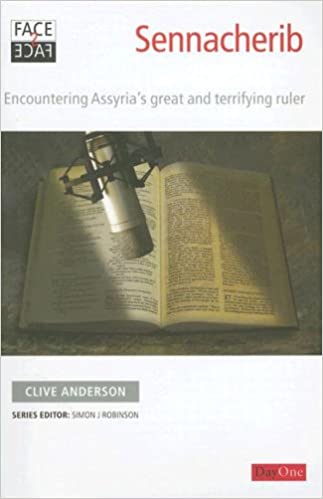This most enjoyable book is in the Face to Face series, and by the time I had finished it, I felt I had indeed come face to face with this king of Assyria, who reigned some 2,700 years ago.Although he is mentioned in the Bible, few people today have heard of Sennacherib – never mind realise that he was a formidable warrior who was feared by all. Much of the book is taken up with the historical background of Sennacherib’s conquest of the kingdom of Judah in the days of King Hezekiah and his attack on Jerusalem in 701 BC (recorded in 2 Kings 18-19; 2 Chronicles 32; and Isaiah 36-37).Although ‘The Assyrians came down like the wolf on the fold’ (as Lord Byron put it) an angel from God destroyed their mighty army. Needless to say, the Assyrians did not record this in their annals of their war campaigns.Instead, when Sennacherib returned home to Nineveh, he had carvings made on the walls of his palace showing his triumphant siege of Lachish, a town some 25 miles south-west of Jerusalem. These stone reliefs are now in the British Museum and illustrate the methods employed by the cruel Assyrian army.Yet for all the cruelty, Sennacherib comes across as a reasonably good king. He liked mountaineering (often in a chair carried by his slaves!), oversaw massive irrigation projects, devised a novel method for casting bronze, and assessed where the best timber could be obtained.Surprisingly for his day, he appears to have had a social conscience and acted fairly and practically when putting down insurrections. His town planning skills are evident in the rebuilding of Nineveh and the construction of a new palace.The Bible teaches that those who live by the sword die by the sword, and this was true for Sennacherib. Some 20 years after the siege of Lachish he was murdered by two of his sons in a temple while worshipping his god.Clive Anderson’s book gives an insight into the times of Hezekiah and Isaiah and provides opportunities for further study through the notes and questions at the end of each chapter.
Sennacherib: Encountering Assyria’s Great and Terrifying Ruler (Face2Face series))

Join the discussion
Read community guidelines
ADVERTISE



